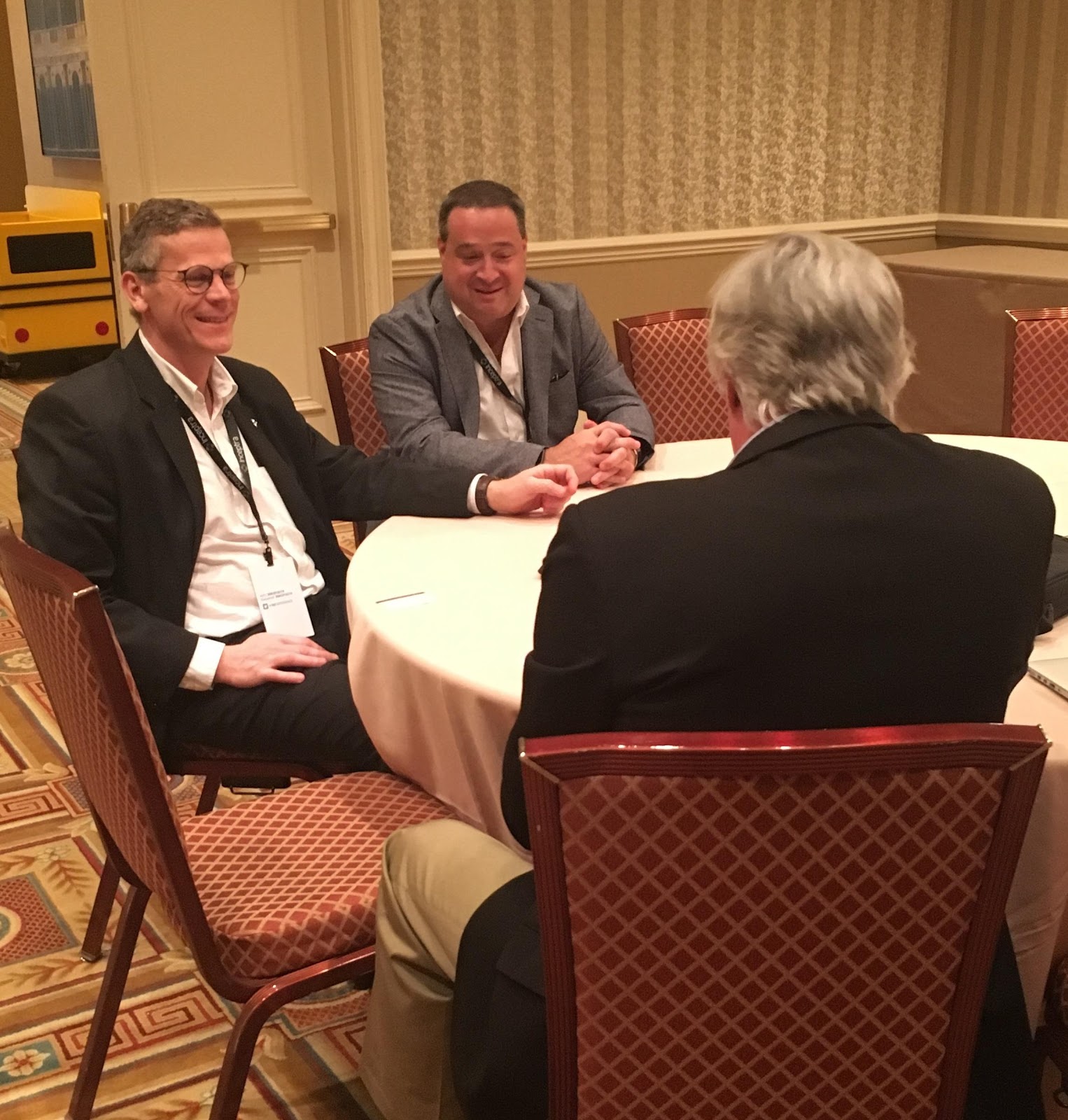Will a single source of truth help multi-discipline and multi-design engineers connect the dots for system-of-system development?
By John Blyler
What are the leading trends in the high tech semiconductor and system spaces? Is there a single source of truth? To find out, John Blyler talked with Olivier De Percin, VP, Digital and Industry, and Louis Feinstein, Global Director High Tech Sales at Dassault Systemes during the 2019 3DExperience event (see Figure 1). What follows is a portion of that conversation. – JB

Figure 1: John Blyler talked with Olivier De Percin, VP, Digital and Industry, and Louis Feinstein, Global Director High Tech Sales at Dassault Systemes during the 3DExperience event in 2019.
Blyler: A common phase heard in the systems-of-systems (SoS) development space is, “a single source of truth.” This phrase refers to the containment of all modeling, design, manufacturing, and other data in a single centralized database that can be accessed by all. This approach is in contrast to a distributed method., the Internet-based OSLC approach. What does a single source of truth mean to you?
Percin: When we talk about the digital continuity, it is really about creating the single source of truth that enables real-time collaboration across the company. This way, the architect, designers and everyone through to manufacturing are connected in real time to the same data and can have the same view of the same thing.
A single source of truth enables the development digital continuity. In particular, it helps achieve a “first time right” approach by enhancing activities like traceability, reusability or modularity and more. Those are the key topics where having it all in one place that can be used in different ways and shape in different places in the company.
Feinstein: Also, we are becoming CAD agnostic. So having a single source of truth means that we build connectors to most platforms, to most software and to all the data. It doesn’t matter if you’re using Altium, Cadence, Solidworks, Catia or anything in between. All the data resides in the 3DExperience platform.
Blyler: Would you agree that a single source of truth requires digital continuity or the capability to maintain all information so that it is always available despite changes in data formats between different tools and evolving technologies?
Percin: Actually, we are moving away from the phrase of digital continuity. Instead we’re talking about connecting the dots. Digital continuity would kind of imply that you have to use everything from Dassault Systemes, which is not the case. What we’re doing is connecting the dots with third parties data and tools to have it in one place and all connected.
Blyler: What specifically does it mean to “connect the dots?” Do the connectors that you mentioned merely grab a snapshot of data as it’s needed from whatever point tools in the CAD, CAM or semiconductor (EDA) space?
Louis: No, our platform has to interact with the various tools directly. Connecting the dots is really a digital continuum in which we are really integrated down to even the levels of the part, schematic and even semiconductor structures. For example, most companies use multiple pieces of IP. We can manage that entire semiconductor IP base. It’s the same thing for electric, electrical, mechanical, and embedded system software. Application Life Management (ALM) – part of the software development activity – uses modularity to keep everything synchronized, the availability to reuse or to use modularity for both software and hardware. This is especially true when dealing with of safety critical systems like ISO 26262 standard for automotive development. So we’re seeing lots of customers now that go right from the semiconductor IP all the way through product.
Blyler: Do you really go down to the RTL-level of the chip design data? I would think you wouldn’t bother with that level of detail but rather just deal with the IP subsystem level files for the chip, board, module, etc. Is that correct?
Louis: That’s right. And this handling of data is getting even more complicated because within the disciplines you’re crossing into different domains especially in system-of-systems (SoS) development. That’s why our customers are looking for modularity and a single source of truth. They want to be able to look through the entire product development and understand the interrelationships at a system of systems level. This holistic view is replacing the traditional hierarchical pieces approach.
–> Part II of this roundtable discussions addresses the need for other trends in the systems and semiconductor market, including compliance with automotive and medical requirements and the changing role of IP.
Originally published on Chipestimate-Cadence “IP-Insider” blog.

